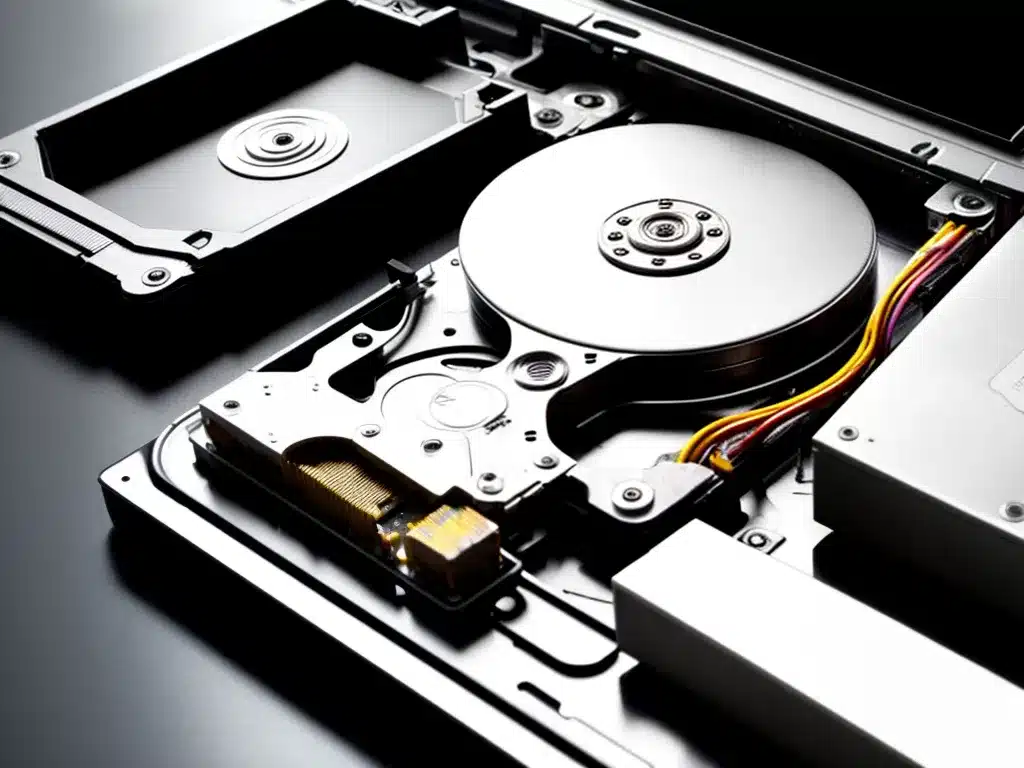
Introduction
As solid state drives (SSDs) become more popular, data recovery from failed SSDs is becoming an increasingly common issue. An SSD has no moving parts, so failures tend to be catastrophic rather than gradual. When an SSD fails, the data is often completely inaccessible with standard methods.
However, there are specialized data recovery techniques that can resurrect data from dead SSDs. With the right tools and techniques, data recovery from SSDs is possible in many cases. In this article, I’ll walk through the best practices for recovering data from a dead SSD in 2023.
Determine If the SSD Is Really Dead
The first step is to determine if the SSD is truly dead. Here are some signs your SSD has failed:
- The drive is not detected at all by your computer
- You get I/O errors when trying to access the drive
- The drive makes unusual noises (clicking, beeping, etc)
- Your computer hangs when the SSD is connected
- The SSD has been physically damaged or exposed to water/extreme heat
Before considering data recovery, try basic troubleshooting steps like:
- Trying a different USB port or cable
- Testing the drive on another computer
- Updating SSD drivers and firmware
- Reseating the SSD and checking connections
If the drive still isn’t recognized, then data recovery is likely your only option for restoring your files.
Choose an SSD Data Recovery Service
Professional data recovery services are the most reliable option for recovering data from a dead SSD. While there are DIY methods, they should only be attempted as a last resort due to the risks of worsening the damage.
When choosing a data recovery service, look for a few key factors:
- Clean room facilities – The recovery should be done in an ESD-safe cleanroom to avoid further data loss.
- Certifications – Choose an ISO certified data recovery lab.
- Experience with SSDs – Ask about their recovery success rates specifically for SSD drives.
- No fix, no fee – Avoid any service that charges big fees just for evaluating your drive.
- Free shipping – Reputable providers will pay for shipping both ways.
I recommend getting multiple quotes before selecting a service. But keep in mind that the cheapest option is not always the best when it comes to safely recovering your valuable data.
Understand the SSD Recovery Process
The exact recovery process will vary depending on the specifics of your SSD failure. But in general, SSD data recovery involves a few key phases:
- Imaging – The drive is cloned byte-by-byte to create a forensic image backup. This is done using specialized tools.
- Analysis – The image is analyzed to determine the failure cause and map out where recoverable data resides.
- Extraction – Data is extracted from the image and reconstructed onto a healthy drive. Proprietary techniques are used for data extraction.
- Repair – If possible, the failed drive is repaired to an operational state. But the priority is recovering the data, not fixing the dead drive.
A professional lab will choose the optimal recovery workflow based on the SSD make, model and failure symptoms. The process requires intricate skills – attempting it yourself risks making the data unrecoverable.
DIY SSD Data Recovery Methods (Not Recommended)
While I advise using a professional service, there are some DIY methods you can attempt at your own risk:
-
Chip-off – Removing the flash memory chips to read them with specialized tools. This requires microsoldering skills and can permanently damage chips.
-
JTAG/ISP – Using a JTAG or ISP programmer to interface with firmware and dump raw NAND flash data. The dumps still need reconstruction.
-
Drive transplant – Putting the SSD PCB into an identical working drive to read it as a slave drive. The donor drive must be a perfect match.
-
Freezer trick – Freezing the SSD for a few hours may allow a brief window of access to recover some files. This is temporary at best.
These DIY approaches have very low success rates and can often make data recovery impossible. Only attempt them if you have already written off the data as lost.
Final Tips to Avoid SSD Data Loss
To avoid needing data recovery in the future:
- Always keep a current backup of your most important files.
- Enable TRIM on your SSD to maintain optimal performance.
- Check your SMART drive health stats periodically.
- Update your SSD firmware regularly.
- Handle SSDs carefully to avoid physical damage.
- Use surge protectors and UPS battery backups.
- Encrypt sensitive data in case your SSD is lost or stolen.
Following best practices for SSD care, maintenance and data backups will keep your data safe. But if your SSD does fail catastrophically, professional data recovery services can often salvage your irreplaceable data as long as you take prompt action.












